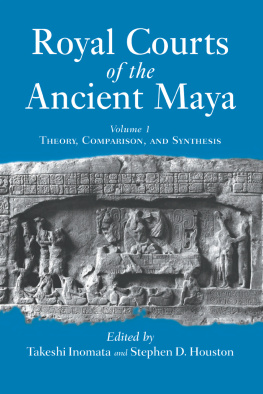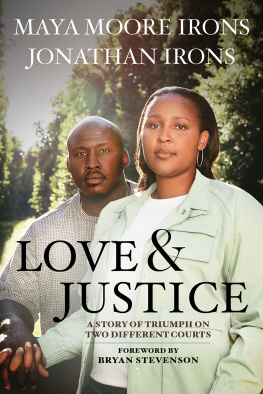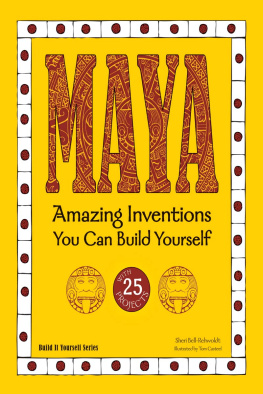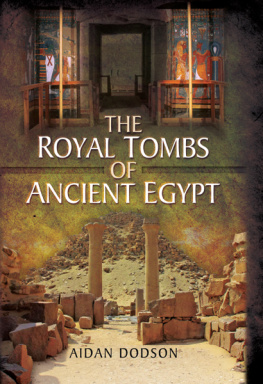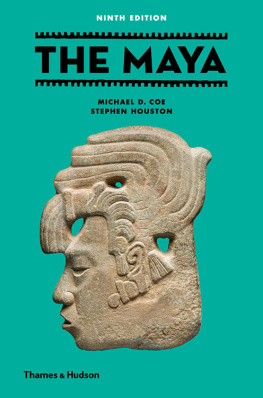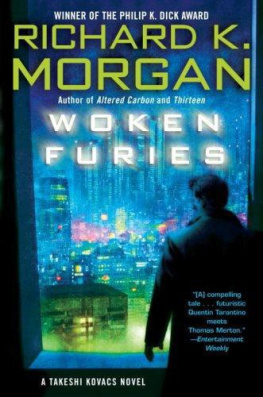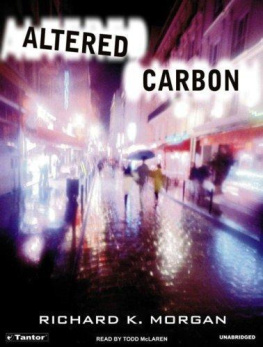Inomata Takeshi - Royal Courts of the Ancient Maya
Here you can read online Inomata Takeshi - Royal Courts of the Ancient Maya full text of the book (entire story) in english for free. Download pdf and epub, get meaning, cover and reviews about this ebook. publisher: Taylor & Francis Group, genre: Politics. Description of the work, (preface) as well as reviews are available. Best literature library LitArk.com created for fans of good reading and offers a wide selection of genres:
Romance novel
Science fiction
Adventure
Detective
Science
History
Home and family
Prose
Art
Politics
Computer
Non-fiction
Religion
Business
Children
Humor
Choose a favorite category and find really read worthwhile books. Enjoy immersion in the world of imagination, feel the emotions of the characters or learn something new for yourself, make an fascinating discovery.
- Book:Royal Courts of the Ancient Maya
- Author:
- Publisher:Taylor & Francis Group
- Genre:
- Rating:3 / 5
- Favourites:Add to favourites
- Your mark:
- 60
- 1
- 2
- 3
- 4
- 5
Royal Courts of the Ancient Maya: summary, description and annotation
We offer to read an annotation, description, summary or preface (depends on what the author of the book "Royal Courts of the Ancient Maya" wrote himself). If you haven't found the necessary information about the book — write in the comments, we will try to find it.
Royal Courts of the Ancient Maya — read online for free the complete book (whole text) full work
Below is the text of the book, divided by pages. System saving the place of the last page read, allows you to conveniently read the book "Royal Courts of the Ancient Maya" online for free, without having to search again every time where you left off. Put a bookmark, and you can go to the page where you finished reading at any time.
Font size:
Interval:
Bookmark:

Royal Courts of the Ancient Maya
Volume One
Royal Courts of the Ancient Maya
Volume One: Theory, Comparison, and Synthesis
EDITED BY
Takeshi Inomata
University of Arizona
AND
Stephen D. Houston
Brigham Young University

First published 2001 by Westview Press
Published 2018 by Routledge
711 Third Avenue, New York, NY 10017, USA
2 Park Square, Milton Park, Abingdon, Oxon OX14 4RN
Routledge is an imprint of the Taylor & Francis Group, an informa business
Copyright 2001 Taylor & Francis
All rights reserved. No part of this book may be reprinted or reproduced or utilised in any form or by any electronic, mechanical, or other means, now known or hereafter invented, including photocopying and recording, or in any information storage or retrieval system, without permission in writing from the publishers.
Notice:
Product or corporate names may be trademarks or registered trademarks, and are used only for identification and explanation without intent to infringe.
Library of Congress Cataloging-in-Publication Data
Royal courts of the ancient Maya/edited by Takeshi Inomata and Stephen D. Houston.
p. cm.
Includes bibliographical references and index.
Contents: v. 1. Theory, comparison, and synthesis
ISBN 0-8133-3640-6 (pb)
1. MayasKings and rulers. 2. Maya architecture. 3. MayasAntiquities. 4. Inscriptions, Mayan. 5. Royal housesMexico. 6. Royal housesCentral America. 7. MexicoAntiquities. 8. Central AmericaAntiquities. I. Inomata, Takeshi, Ph. D. II. Houston, Stephen D.
F1435.3.K55 R69 2000
972.81016dc21
00-063306
ISBN 13: 978-0-8133-3640-4 (pbk)
To the memory of
Floyd Lounsbury
Contents
, Takeshi Inomata and Stephen D. Houston
PART ONE
Theoretical and Thematic Approaches
, Takeshi Inomata
, Stephen D. Houston and David Stuart
, Patricia A. McAnany and Shannon Plank
, David Webster
, Simon Martin
, Dorie Reents-Budet
PART TWO
Comparative Views and Conclusions
, Susan Toby Evans
, Michael D. Coe
Tables
Figures
The idea for this book took shape in 1996, when we organized a small session on this topic for the annual meeting of the American Anthropological Association. Most participants would agree that through the efforts of the speakers, the AAA session was productive and well-received. It seemed logical to undertake a more ambitious effort in a forum that would allow greater intellectual and chronological scope. Accordingly, we devised a symposium titled Royal Courts of the Ancient Maya, held at Yale University in November 1998, with the plan of publishing an edited volume afterward. At the outset, we felt that Yale would be an ideal venue. It was, after all, the place where Michael Coe, George Kubler, and Floyd Lounsbury had created a remarkable program of study and learning that continues to influence current research on ancient Maya art, writing, and thought. Sadly, there was another reason to hold the conference at Yale. Floyd, a beloved figure to all who knew him and a personal inspiration for Houston, passed away in late spring 1998, after years of physical frailty that somehow failed to hinder his incisive and precise mind. We dedicate the conference and this two-volume book to Floyds memory and to his unique combination of kindness and exacting scholarship.
Besides the original participants of the Yale conference, contributions by Patricia McAnany and Shannon Plank, Simon Martin, and Matthew Restall (his chapter is in volume 2, forthcoming in 2001) further enriched the book. John Clark expanded Hansens chapter as coauthor (in volume 2). We regret that Andrew Apter and Richard Burger, who participated in the conference as discussants, are not included in the book. Apter is a cultural anthropologist specializing in the kingship of the Yoruba in West Africa, and Burger is an Andean archaeologist. All the participants of the meeting greatly benefited from their insightful comments. The chapters by the original participants of the symposium (except for the concluding chapter of volume 1) were reviewed by two anonymous readers, as well as by ourselves. Our hearty thanks go to the authors and reviewers of the book, who endured our continuous nagging and made timely publication possible. Karl Yambert of Westview Press enthusiastically supported our proposal for this book from the beginning. Antonia Foias carefully translated the chapter by Valdes (in volume 2). The conference was held when Inomata was a faculty member at Yale. We note with gratitude that funding for the conference and book editing came largely from Yale, including help from the Department of Anthropology, the Kempf Memorial Fund, the Council on Latin American Studies, the Martin A. Ryerson Lectureship fund, the Yale University Art Gallery, the Peabody Museum of Natural History, and the Yale Center for International and Area Studies. We are particularly grateful for assistance from Arline F. McCord, Yale associate provost; K. David Jackson, the chair of the Council on Latin American Studies; Louisa Cunningham, associate director of Yale Art Gallery; and Nancy L. Ruther, associate director of the Yale Center for International and Area Studies. Brigham Young University and Clayne Pope, the dean of the College of Family, Home, and Social Sciences, provided travel funds for Houstons participation in the conference through a university professorship; a generous sabbatical leave during the 19981999 school year gave Houston additional time for editing. Yale students and staff, especially Mark Child, Robert Clark, and Nancy Phillips, took care of logistical matters for the meeting and book preparation and responded cheerfully to ever-mounting demands. Inomata also thanks Daniela Triadan for her help and support in various stages of this project.
Lowland site names in this book follow those used in the Corpus of Maya Hieroglyphic Inscriptions (Graham 1975:9, 2324) and Function and Meaning in Classic Maya Architecture (Houston 1998). During the final editing process, we took the liberty of changing alphabetical spellings of some Maya words, including ajaw and sajal, to ensure consistency from chapter to chapter. The adoption of these spellings does not mean that all authors are committed to this phonetic reconstruction of the Classic Maya language. Transcriptions of glyphic texts were left as they were submitted to the editors by each contributor. Chapter 17 by Braswell uses the orthographic system proposed by the Academia de las Lenguas Mayas de Guatemala.
Takeshi Inomata and Stephen Houston
References
Graham, Ian. 1975. Corpus of Maya Hieroglyphic Inscriptions, vol. 1: Introduction to the Corpus. Cambridge, MA: Peabody Museum of Archaeology and Ethnology, Harvard University.
Houston, Stephen D., ed.. 1998. Function and Meaning in Classic Maya Architecture. Washington, DC: Dumbarton Oaks Research Library and Collection.
Floyd Glenn Lounsbury (19141998)
On May 14, 1998, the study of writing systems lost one of its greatest practitioners. Prof. Floyd Glenn Lounsbury, Sterling Professor Emeritus of Anthropology at Yale University, died at the age of 84, after suffering for many years from heart disease. He left behind a wife, daughter, and many mourning students who revered this exemplary scholar and large-souled man.
Font size:
Interval:
Bookmark:
Similar books «Royal Courts of the Ancient Maya»
Look at similar books to Royal Courts of the Ancient Maya. We have selected literature similar in name and meaning in the hope of providing readers with more options to find new, interesting, not yet read works.
Discussion, reviews of the book Royal Courts of the Ancient Maya and just readers' own opinions. Leave your comments, write what you think about the work, its meaning or the main characters. Specify what exactly you liked and what you didn't like, and why you think so.

